- Theory (No images)
- Define in your own words what are simple moving averages and exponential moving averages.
Simple Moving Average
A simple moving average can be defined as a technical indicator that equalizes a variety of prices, ofttimes closing prices, divided by the number of periods. Many times, the simple moving average can be used to show the trend of a security’s price. Supposing the simple moving average is an upward trend, for instance, this indicates that its price is going up. The reverse is the case if there is a decline in security’s price trend.
Simple moving average (SMA) can also be said to be a mathematical moving average computed by annexing new prices and subsequently dividing their sum by the number of periods in the average of the calculation. For instance, one could sum up a security's closing price for several periods and subsequently dividing the total by a selfsameeer of periods. There is a rapid response by short-term averages to modifications in the underlying security's price, whereas the long-term averages react slower.
Exponential Moving Average (EMA)
The Exponential Moving Average (EMA) is a kind of moving average (MA) which ranks weight and significance on the latest data points high and can as be called exponentially weighted moving average. The exponential moving average shows a response more importantly to new price modifications than a simple moving average (SMA), which puts to use the weight of the same value to every observation in the period.
2.. Explain how simple and exponential moving averages are calculated
Calculating Simple Moving Averages (SMA)
To calculate a simple moving average, the sum of the number of prices within a period is divided by the number of periods. For example, if the following $10, $11, $12, $11, $14 are market prices over five days. The simple moving average would equal $10 + $11 + $12 + $11 + $14 divided by 5, = $58 divided by 5 = $11.6.
Calculating Exponential Moving Average (EMA)
The Formula for EMA is:
EMA Today = [Today's value x (Smoothing /1+Days)] + EMA Yesterday x [1 − (Smoothing/1 + Days)]
where:
EMA is an Exponential moving average
Calculating the EMA demands that one more observation than the simple moving average. Assuming that one wants to use 20 days as the number of observations for the exponential moving average, it is required that one waits until the 20th day to attain the SMA. On the 21st day, the SMA from the previous day may then be used as used fusedMA for the previous day.
The reckoning for the SMA is free from ambiguity. Simply, it is the total of the closing prices of stock during a period, divided by the number of observations for that period. For instance, a 20-day SMA is just the total of the closing prices for that 20 trading days, divided by 20.
Next is to calculate the multiplier for smoothing the EMA, which is a typical manner follows the formula: [2 ÷ (number of observations + 1)]. For instance, for a 30-day moving average, the multiplier would be [2/(30+1)] = 0.054.
Lastly, the formula below is used for calculating the current EMA:
EMA = Closing price x multiplier + EMA previous day x (1 - multiplier)
The EMA offers a higher weight to new prices, whereas the SMA allocates equal weight to every value. Greater is the weighting offered to the latest price for a shorter-period EMA than for a longer period of selfsame EMA. For instance, an 18.2% multiplier is put into use to the latest price data for 10 days EMA, whereas the weight of only 9.5% is for 20 days EMA.
3.. Briefly describe at least 2 ways to use them in our trading operations.
2 Ways of using Simple Moving Average (SMA)
The following are two (2) of using SMA in trading operations;
The SMA is a trading indicator with varied uses or functions which can constitute the part of any trading strategy hence, it can play the role of a standalone indicator or be used to locate the current trend direction and make a forecast of the kind of market one may be trading.
Simple moving average can also constitute a trading strategy of its own when price action is added to the depth decision-making process.
2 Ways of using Exponential Moving Average (EMA)
The EMA can be used in the following two (2) ways
Following Trend: Essentially the EMA can be used to track the basic trend. Supposing the stock didn't close beyond the average – one remains in the trade.
Crosses of Moving Average: By making use of two distinct exponential moving average crosses one can give rise to buy and or sell signals. For instance, one can have a rapid average cross a slow average to initiate a trade signal.
4.. What is the difference between simple moving averages and exponential moving averages (Explain in detail)
While a simple moving average the the the the of teffortSeaforthof the same value to each of the values within a period, an exponential moving average places greater weight on new prices. Exponential moving averages in a typical manner are seen as a more seasonable or prompt indicator of a price trend, and as a result, a good number of traders prefer using it to a simple moving average. One of the notable differences between the sensitivity that EMA and SMA display to modifications in the data used in its calculation.
More explicitly, the EMA offers higher weights to new prices, whereas the SMA allocates equivalent weights to every value. There is a similarity between the two averages for the reason that they are translated or explained in the same manner and both are frequently or usually used by technical traders to smooth out fluctuations of price. EMAs are more responsive to the newest price modifications than SMAs since it places a higher weighting on new data than on older data. This makes the results from EMAs more seasonable or prompt and elucidates why they are chosen by numerous traders.
5.. Define and explain in your own words what "Fibonacci Retracements" are and what their gold ratios are
Fibonacci Retracement:
These are levels, a horizontal line that points out or shows where resistance and support are probable which also have a base on Fibonacci numbers. Each level is combined with a percentage thus, the percentage shows how much of a previous move the price has retraced. 23.6%, 38.2%, 61.8%, and 78.6% are Fibonacci retracement levels as well as 50% while a Fibonacci ratio is not official.
The indicator has a practical or beneficial use for the reason that it can be drawn between any two major price points, like a high and a low. The indicator will subsequently make the levels between these two points.
If the price of a stock increases by $10 and then drops by $3.82. In that case, it retraced 38.2%, which is a Fibonacci number. These Fibonacci numbers are seen in every part of nature and as a result, a good number of traders credits veracity that these numbers are also relevant in financial markets.
The Fibonacci ratios are obtained from the series of Fibonacci: 0, 1, 1, 2, 3, 5, 8, 13, 21, 34, 55, 89, 144, 233, 377, 610, etc. In this case, each number is equivalent to the sum of the two numbers occurring before it. Fibonacci ratios are based on knowledge of mathematical relationships discovered in this formula. Thus, they make the following ratios 23.6%, 38.2%, 50% 61.8%, 78.6%, 100%, 161.8%, 261.8%, as well as 423.6%. Albeit 50% is not a perfect Fibonacci ratio, it is however used as an indicator of support and resistance.
- Practice (Only Use of own images)
- Show step by step how to add a "Simple and Exponential Moving Average" to the chart (Only your screenshots - Nothing taken from the Web).
I will label my screenshots for easy comprehension of the reader. I was able to demonstrate the simple or exponential Moving average for a short term and long time which were set at periods 50 and 100 respectively. The screenshot went further to indicate the Death and Golden Cross at different points.
For the short term MA-50 period
A. Click on the f function icon
B. Click on the moving average option
C. Set your periods, select if you want it as simple or exponential
D. Choose your style or colour to enable you indicate the line trend easily.
E. Then click on the Done button to set
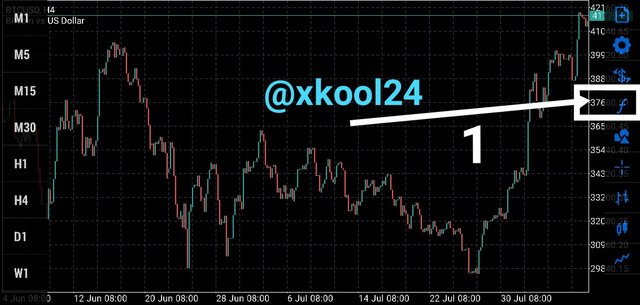
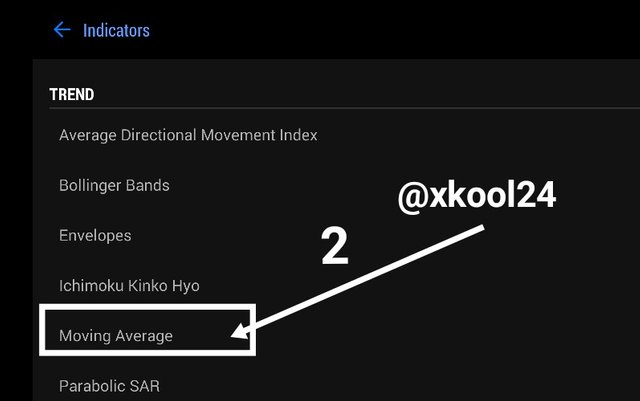
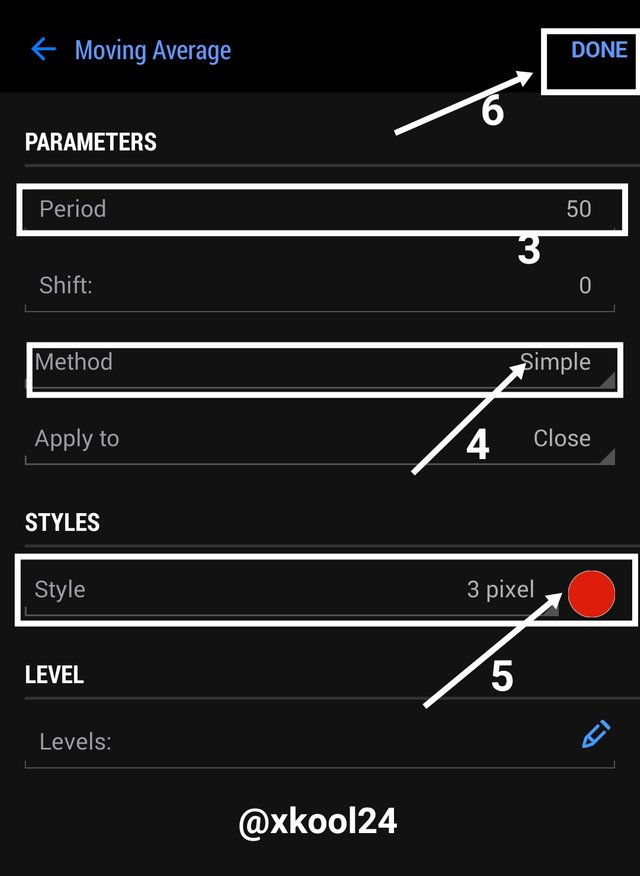
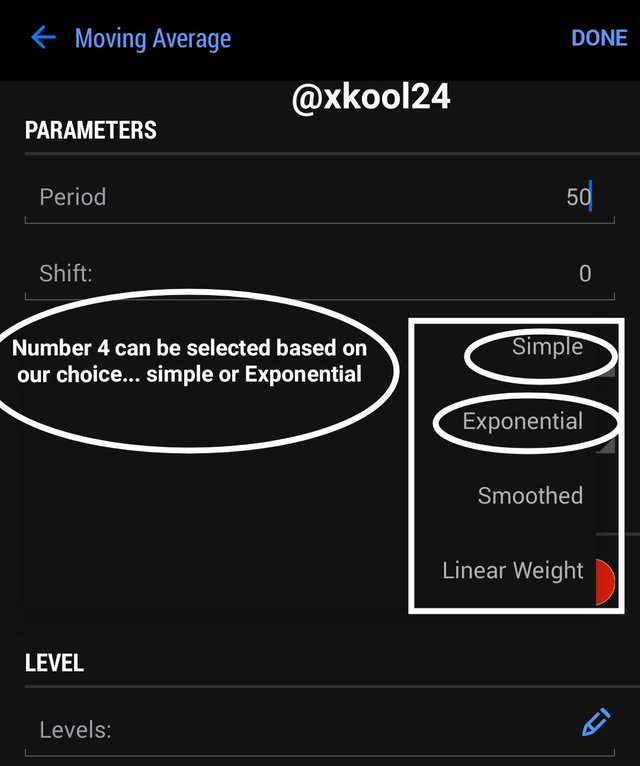
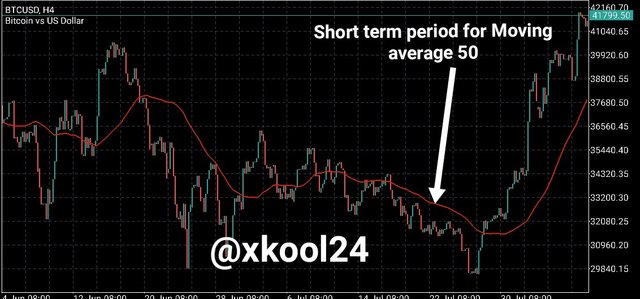
For the Long term MA-200 period
A. Click on the f function icon and on the f+ icon
B. Click on the moving average option
C. Set your periods, select if you want it as simple or exponential
D. Choose your style or colour to enable you indicate the line trend easily.
E. Then click on the Done button to set
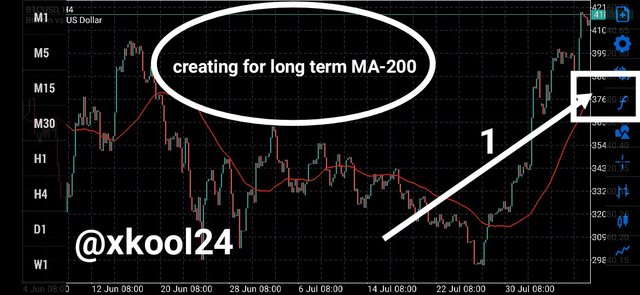
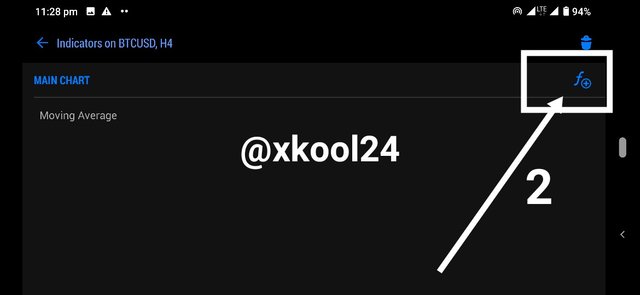
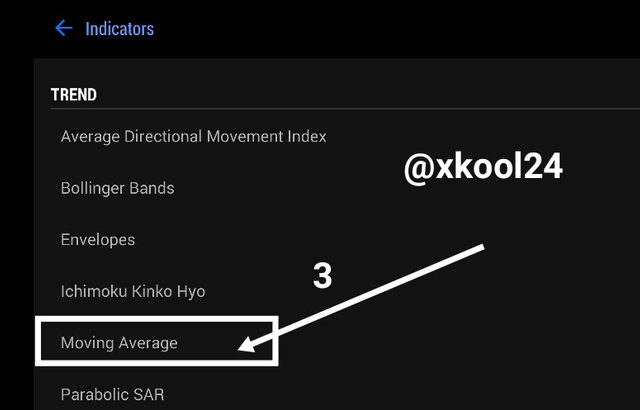
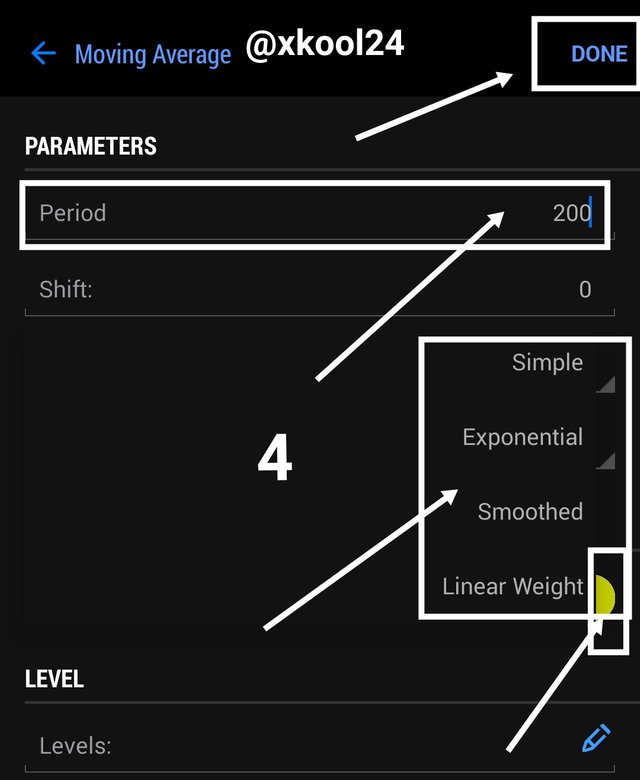
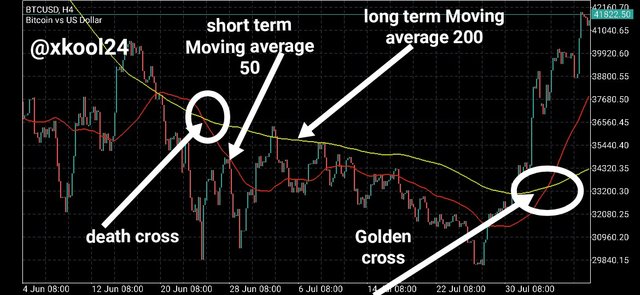
Thank you Prof